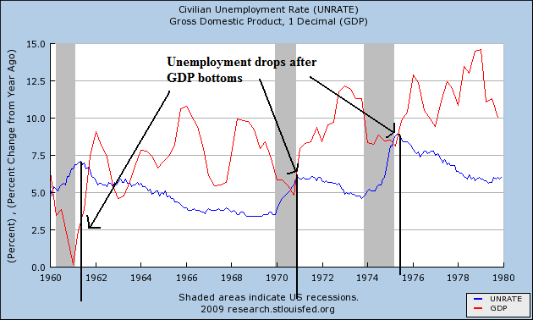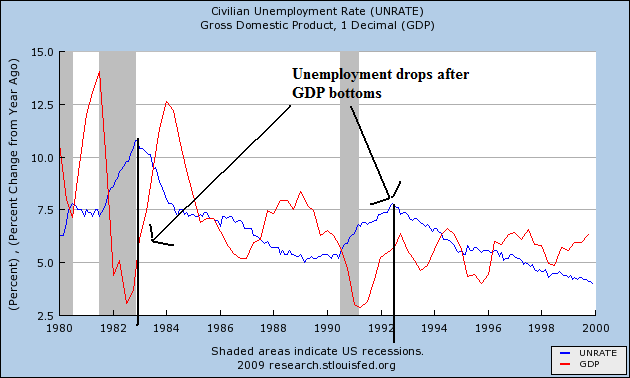Let's start with the conclusion of a Fed letter from the San Francisco Federal Reserve:
What does all this mean for the course of the labor market? We combine data on involuntary part-time workers with the standard unemployment rate to arrive at an alternative measure of labor underutilization. We plot this measure in Figure 3, which shows that the labor market has considerably more slack than the official unemployment rate indicates. The figure extends this labor underutilization measure using the Blue Chip consensus forecast for the unemployment rate as a benchmark and then adding a share of involuntary part-time workers based on the proportion of workers in that category to the unemployed during the current recession. This projection indicates that the level of labor market slack would be higher by the end of 2009 than experienced at any other time in the post-World War II period, implying a longer and slower recovery path for the unemployment rate. This suggests that, more than in previous recessions, when the economy rebounds, employers will tap into their existing workforces rather than hire new workers. This could substantially slow the recovery of the outflow rate and put upward pressure on future unemployment rates.
Here's the translation: there are a lot of people out of work and -- just as importantly -- a lot of people who are underutilized. That means that when the economy ramps up there are a ton of people who need work. That means it's going to take awhile for the unemployment rate to come back down.
At this point it makes sense to highlight a current argument about terminology -- what do you call the period between a return to positive GDP growth and the drop in umemployment? Is that really a recovery or another economic period that we need a new name for? Personally, I call it a recovery although I more than understand that others will understandably differ with that analysis. At this point it's a judgment call.
However, let's look at a simple economic fact. GDP has to turn positive in order for unemployment to start dropping. Below are three graphs from the St. Louis Federal Reserve. They show two data points: the yeare over year percentage change in GDP and the unemployment rate. With all recoveries save one (the one after the end of WWII) GDP has bottomed before unemployment started to drop. Notice that in the 1950s the length of time was fairly long. This difference contracted in the 1970s but returned in the 1980s and beyond. However, regardless of the length of time, it's important to note we need positive GDP growth before we start to think about a lowering unemployment.



This is one reason why the leading indicators are so important -- they occur before a recovery starts. And that's why the last two months of very positive news in that arena is so important:
The Conference Board LEI for the U.S. increased sharply for the second consecutive month in May. In addition, the strengths among its components continued to exceed the weaknesses this month. Vendor performance, the interest rate spread, real money supply, stock prices, consumer expectations, and building permits contributed positively to the index, more than offsetting the negative contributions from weekly hours and initial unemployment claims. The index rose 1.2 percent (a 2.4 percent annual rate) between November 2008 and May 2009, the first time the index has increased over a six-month period since July 2007, and the strengths among the leading indicators have become balanced with the weaknesses during this period.
Ideally what happens is the leading indicators increase, GDP turns positive and then unemployment drops. Now -- when unemployment drops is a big issue. But history tells us it drops after GDP turns positive. So, let's hope we see some growth soon.